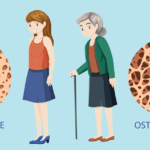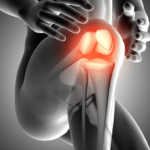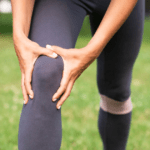Cartilage Regeneration (Magazine Singapore – Ezyhealth.Com)
August 4, 2014
A Difficult But Possible Endeavour
Cartilage damage is a common problem in many joints especially the knee. It is not an easy problem to treat, but there are many treatment modalities available to repair or regenerate damaged cartilage.
Cartilage Damage as a Cause for Knee Pain
Knee pain is one of the most common reasons for seeing an orthopaedic surgeon. The number one reason for knee pain is articular cartilage damage. Many other injuries to the knee, such as ligamentous tears and menisci tears, also increase the risk of damage to the articular cartilage. If left untreated, the joint can become stiff, swollen, and painful. It may progress to a stage that requires a total joint replacement with metal and plastic components.
Articular Cartilage
Articular cartilage is the white shiny material covering the articulating bones that forms the joint. It serves as a lubricating surface as well as a shock absorber. The cartilage can be damaged by an accident or a sporting injury, overuse, or abnormal joint alignment (e.g. having bowed legs). The cartilage damage can be seen as a hole or crater on the otherwise smooth surface of the joint. The degree of damage is also important. This is determined by the depth of the crater seen on the cartilage surface. The deeper the crater, the worse the damage, and the treatment also becomes more complex. Discrete cartilage damage must be distinguished from the condition of osteoarthritis, which is the widespread breakdown of cartilage across the whole joint secondary to wear and tear of ageing.
Assessment and Treatment
The treatment starts with a detailed history taking and physical examination. This is supplemented by imaging studies like a plain X-ray and a magnetic resonance imaging (MRI) scan. Once the diagnosis of cartilage damage is made, different treatment modalities are employed. Most of the treatment can be done by arthroscopy, more commonly known as keyhole technique. The procedure can be done through two small incisions using a camera scope and specialised equipment. The advantages of keyhole technique are less pain, less bleeding, and faster recovery. However, some complex procedures will still require a traditional open incision technique where a bigger cut is made to expose the cartilage lesion. More importantly, other aggravating factors like misalignment in the joint must be addressed to ensure the best results. An example is when the patient is bow legged, a straightening procedure might be needed together with the cartilage regeneration procedure.
Different Treatment Modalities
1) Arthroscopic Debridement
For the less severely damaged cartilage, all that is needed is a ‘clean up’ procedure where the frayed and irregular cartilage lesion is smoothened out.
2) Microfracture
For lesions smaller than 2cm2, microfracture is the recommended procedure. It involves puncturing small holes in the hard interface between the cartilage and the underlying bone to create channels for the bone marrow cells to surface and fill the crater. The crater will fill up gradually with scar cartilage (Fibrocartilage). Recent advances in this technique involve using a synthetic patch to act as a scaffold for the bone marrow cells to build on.
3) Autologous Chondrocyte Implantation (ACI)
This is a two-step procedure that takes several weeks to complete. Healthy cartilage cells are first harvested arthroscopically from a non-weight bearing area of the knee. The cells are grown in the laboratory for around six to eight weeks. An open surgical procedure is then done to implant the newly grown cells. A variety of techniques are employed to keep the cultivated cartilage cells in place.
ACI is most often recommended for younger patients who have single defects larger than 2cm2. ACI uses a patient’s own cells, so there is no danger of a patient rejecting the tissue.
4) Matrix-induced Autologous Chondrocyte Implantation ( MACI)
This is also a two-step procedure that repairs the articular cartilage damage by using the patient’s own cultured cartilage cells. The harvesting process is similar to the ACI technique. Afterwards, the cells are seeded on a membrane. Several weeks later, the membrane with the cultured cells is placed into the defect.
5) Osteochondral Autograft Transplantation/Mosaicplasty
This is a one-step procedure whereby a ‘plug’ of healthy tissue consisting of the patient’s own cartilage and underlying bone is harvested and transferred to replace the damage area. When multiple plugs are used, the result is like a mosaic pattern, hence the term mosaicplasty.
Post-operative Care
After the cartilage repair procedure, there is usually a period (six to eight weeks) that the patient is required to use crutches. This is to reduce pressure on the healing cartilage. The time taken for complete recovery could be up to three to six months.
Article by Dr Tan Chyn Hong originally posted on Ezyhealth.com
About the author
Doctor’s News



Doctor’s Medical Insights







